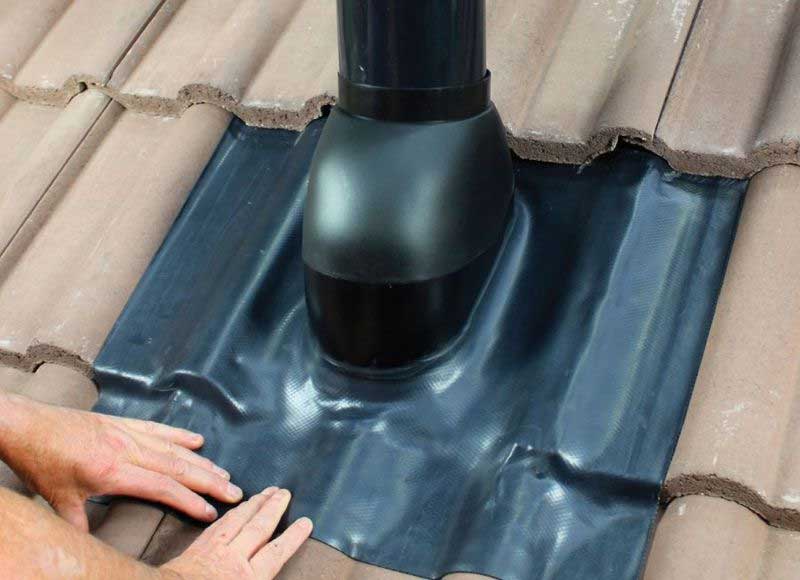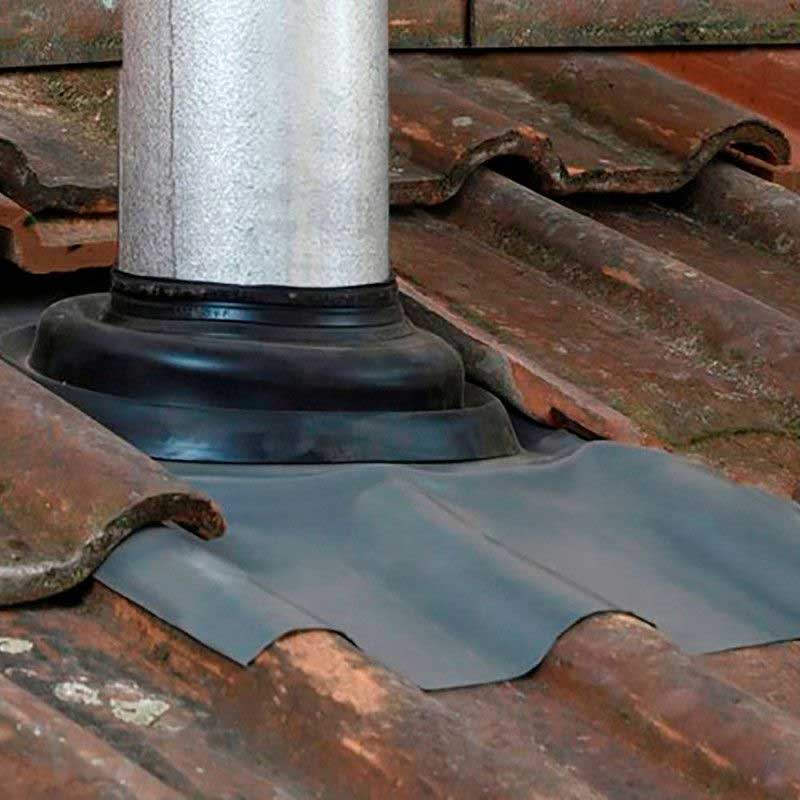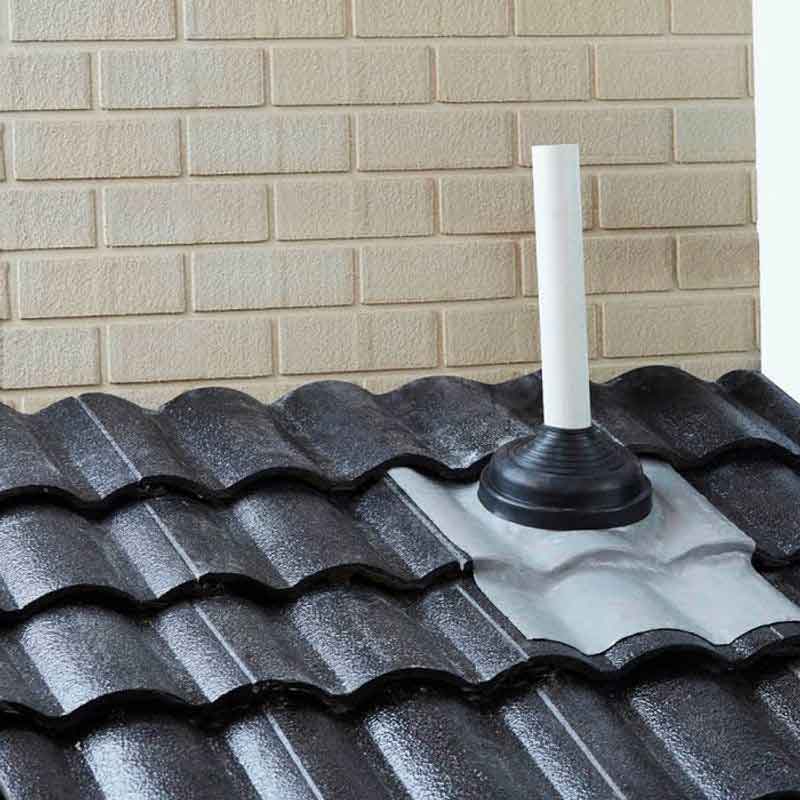Roofs are prone to leaking without the correct waterproofing materials to prevent the issue. When you have chimneys, vents, pipes etc, you must invest in good waterproofing as these areas in and around the roof have the highest risk of leaking. That’s where pipe flashing comes in. Pipe flashing creates a flexible, weather-proof seal around specific roofing features (e.g. chimneys and pipes). So, what pipe flashing is there? Well, that’s what we’ll help you discover with our guide.
Table of contents
- What is pipe flashing?
- Types of roof pipe flashing
- Lead flashing
- Alternatives to lead flashing
- What type of flashing do I need?
- Pipe flashing sizes
- How to install vent pipe flashing
What is pipe flashing?
Sometimes referred to as a roof boot or roof vent boot, pipe flashing is designed to sit on the penetration section of a vent pipe on a roof (I.e. the section with the object protruding from the surface, such as pipes or chimneys). This seals that section of the roof around the pipe, preventing water from getting into the property. Not only does this serve as a useful tool, but it also provides a neater finish to the property’s roofing.

Types of roof pipe flashing
You may have heard of lead flashing. However, there are alternative pipe flashings available. At Roofing Superstore, we have selected efficient products to suit your requirements.
Here are just some of the available products you can find in our pipe flashing range.
Lead flashing
Roofing lead has been used for many years and comes in two types – milled lead and cast lead. Their purpose isn’t just for waterproofing but also for repairs.
Both have their qualities, your choice will depend on your requirements. You can discover more about each type via our milled lead vs cast lead guide.
Alternatives to lead flashing
Lead flashing alternatives are typically made from modified bitumen and then set around a metal grid for structural support. Their design resembles lead, while still offering additional benefits that you would usually associate with lead flashing products.
There are also EPDM pipe flashings. These are becoming more common because of their weather resistance, ability to withstand certain constant temperatures (high and low) and generally more environmentally friendly. This is because it is typically 100% recyclable and/or manufactured using recycled material.
For more on lead flashing alternatives, look to our guide about alternatives to lead flashing. We also have a complete guide to EPDM roofing and other EPDM guides via our Help and Advice if you’re opting for a complete EPDM roof installation. Don’t wait to explore for further information!

What type of flashing do I need?
As roof tiles will be in contact with the waterproofing material, you must identify their type to prevent mismatches. You’ll also want to choose a material that will last as long as the roof. As seen in the table above, there are alternatives, but lead flashing is typically the most common material. Other materials are as follows:
- Stainless steel
- Aluminium
- Copper
There are specifications to follow as well. These specifications cover everything from design to fabrication and installing the flashing materials. Luckily, most flashing manufacturers will have their own instructions for their flashing.
Another consideration is to ensure your roof has been correctly installed and has had proper repairs. A main issue is that many repair people, even those with professional experience, use caulk, sealant and mastics to seal joints and leaking spaces. This is not a long-term solution. You must have repairs properly completed before applying the flashing or it will be prone to issues over time.
Additionally, avoiding exposing fasteners is recommended. If you secure something to a roof deck using nails, screws or rivets, hide these beneath a roofing material to ensure no rain exposure. Again, do not use caulk or similar products to seal these as they offer weak protection.

Pipe flashing sizes
The size of your pipe flashing refers to its length, width and thickness. Nominal thickness varies depending on the material. You can find out more about why the thickness of flashing matters in our pipe flashing size guide.
How to install vent pipe flashing
You must install pipe flashing properly. To support you through this process, we’ve created a how-to guide about installing pipe flashing to make the process simple to understand.
Did you opt for lead flashing? You’ll need to take care of it. Luckily, we’ve got a guide to help you understand how to look after your lead flashing during its use. Alternatively, you can speak to our friendly customer service team for advice regarding any other queries you have surrounding flashing.
















